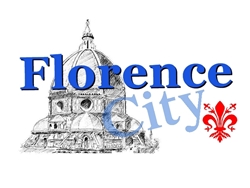![[cml_media_alt id='921']san-remigio[/cml_media_alt]](https://www.florencecity.it/wp-content/uploads/2016/12/San-Remigio-225x300.jpg)
The current headquarters of the Church of San Remigio there was always called San Remigio building that until 1040 was a hospice for French pilgrims traveling to Rome. The church was built in place of the hospice from 1040 to 1100 and then rebuilt more or less in 1350. The families in the Gothic style that more than others financed the reconstruction are the Alberti, the Pepi, the Bagnesi and Alighieri, in fact, the coats of arms of these families capeggiano engraved on octagonal pillars and walls.
The first prior of the church was Gherardello from Florence a great musician and composer Italian Ars Nova.
![[cml_media_alt id='922']san-remigio-interni[/cml_media_alt]](https://www.florencecity.it/wp-content/uploads/2016/12/San-Remigio-interni-300x200.jpg)
The exterior facade is shaped like a hut in the Romanesque style, the door is topped by a pointed arch sixth bezel, above even a lancet. The sloping roof is characterized by arches that continue on the left flank. To the right of the main door another small door which is also topped by a bezel.
Inside the church appears with three naves the wider central and high and the two sides more slender and slightly lower separated by octagonal pillars with carved capitals. In the left aisle are found frescoes depicting St. Christopher and in the right aisle there are two chapels with altars, he finds himself in the first San Remigio baptizing King Clovis in the second and the remains of a fresco of St. Sigismund. In both terminals quadrangular chapels are the Immaculate Conception of Jacopo Chimenti and in the other a painting of the Madonna with Child of uncertain origin, perhaps Gaddo Gaddi. The central presbytery is raised on some steps.
Above the entrance of the sacristy in the right aisle we find the pipe organ, one of 1584 mechanism subsequently modified and improved and finally restored in 2001.
In the cloister attached to the church, there is a bronze statue of St. Pio of Pietrelcina on purpose in 1998.

